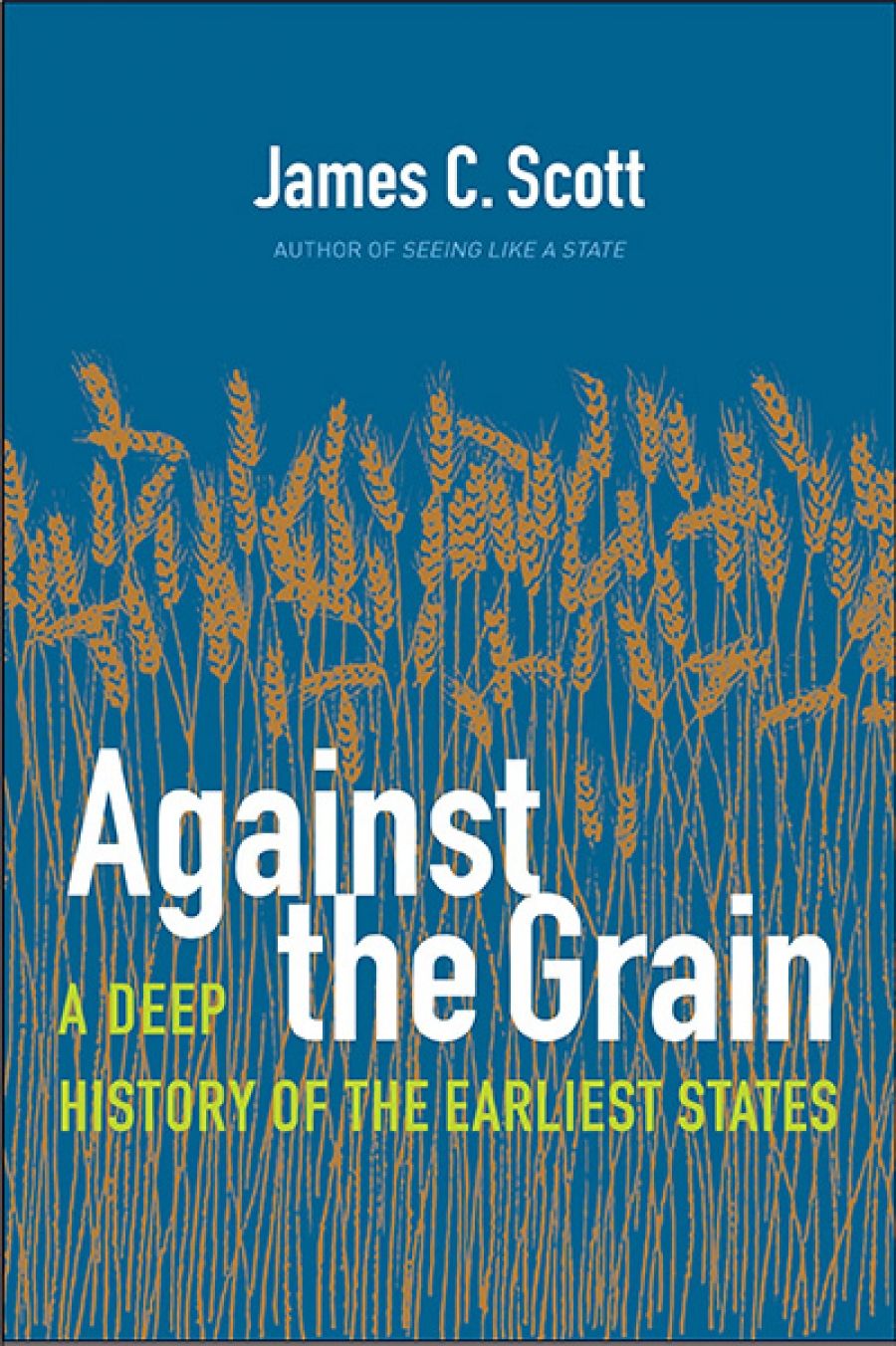
- Free Article: No
- Contents Category: History
- Custom Article Title: Kate Griffiths reviews 'Against the Grain: A Deep History of the Earliest States' by James C. Scott
- Custom Highlight Text:
The old narrative goes that first we were hunter–gatherers, then we discovered farming, then agricultural communities ‘progressed’ to states and, eventually, industrial cities. This ‘progression’ is supposedly how humans became ‘civilised’. This old narrative has been debunked by many ...
- Book 1 Title: Against the Grain
- Book 1 Subtitle: A Deep History of the Earliest States
- Book 1 Biblio: Yale University Press (Footprint), $44.99 hb, 329 pp, 9780300182910
In 10,000 BCE the world’s population was about four million. Five thousand years later it had only grown to five million, despite the agricultural revolution. Over the next 5,000 years the population grew to around 100 million people. Scott explores why the early stages of the agricultural revolution were so tough, ‘perhaps the most lethal period in human history’, and what made the later population boom possible.
Scott’s focus is on states with a political system, city walls, and tax collection and distribution. These early states arose in resource-rich areas where an agricultural surplus was possible to support an élite class and administrative order. Above all, Scott argues, ‘grains make states’. Why don’t we see banana, chickpea, taro, or potato states? Other crops can provide more calories per unit of land or labour than grains can. Yet only grains can be readily stored, taxed, and distributed.
These early states were also very fragile and liable to collapse. Instead of drawing people in with luxury and opportunity, ‘the early states had to capture and hold much of their population by forms of bondage and were plagued by the epidemics of crowding’, Scott argues. Slaves were integral to the stability and growth of early states – for their reproduction as much as their labour. Women of reproductive age were prized captives of war.
In Against the Grain, Scott explores the many reasons why agricultural and state life was not necessarily a turn for the better. The quality of human life appears to have gone backwards in diet, health, and leisure. Yet sedentary life brought high rates of reproduction, even despite ill health and high infant and maternal mortality.
Hunters, gatherers, and nomads are alluded to throughout, but never discussed in detail. Scott’s argument that it may have been better to be outside the state than in would benefit from deeper analysis of ‘non-state peoples’. Scott does however give attention to the verges of states – to the non-state peoples on the periphery, whom he refers to, tongue in cheek, as barbarians. One of the book’s most interesting arguments is that states make barbarians and barbarians make states.
The relationship of states with nearby non-state peoples was, on the whole, one of exchange and mutual benefit, though not necessarily peaceful. ‘It was in many ways “better” to be a barbarian because there were states ... states were juicy sites for plunder and tribute.’ Raiding was an unstable mode of subsistence, but raiders could offer states protection from external attacks as well as access to trade. ‘A stable protection racket like this is hard to distinguish from the archaic state itself.’
 Glass plate negative, full plate, 'Wheat Farming', Kerry and Co, Sydney, ca. 1884-1917 (Museum of Applied Arts & Sciences, Wikimedia Commons)
Glass plate negative, full plate, 'Wheat Farming', Kerry and Co, Sydney, ca. 1884-1917 (Museum of Applied Arts & Sciences, Wikimedia Commons)
Scott argues convincingly that ‘the membrane between [state and non-state] spheres was permeable ... states were disgorging subjects as well as incorporating them’. Epidemics, crop failures, taxes, and war provoked a steady leakage and occasional mass exodus of state peoples. Meanwhile, wars for captives, trading relations with nearby non-state peoples, and the conquering of states by barbarians who became the new ruling class, helped the early states to survive.
In Against the Grain, Scott’s aim is to connect the dots of existing knowledge for a general audience and to challenge peoples’ assumptions about the old narrative. While the book explores some fascinating ideas, its style occasionally detracts from its aim. Some arguments get lost in wordy and obscure language. For example, when discussing the role of slavery in state-building, Scott writes: ‘Adopting for the moment the purely strategic view of a quartermaster in charge of manpower needs can help clarify why slavery, in the form of war captives that it usually took, had several advantages over other forms of surplus appropriations.’
Don’t expect a page-turner, but if this topic interests you, Against the Grain offers an accessible exploration of the early Mesopotamian states, with a good dose of myth-busting.


Comments powered by CComment